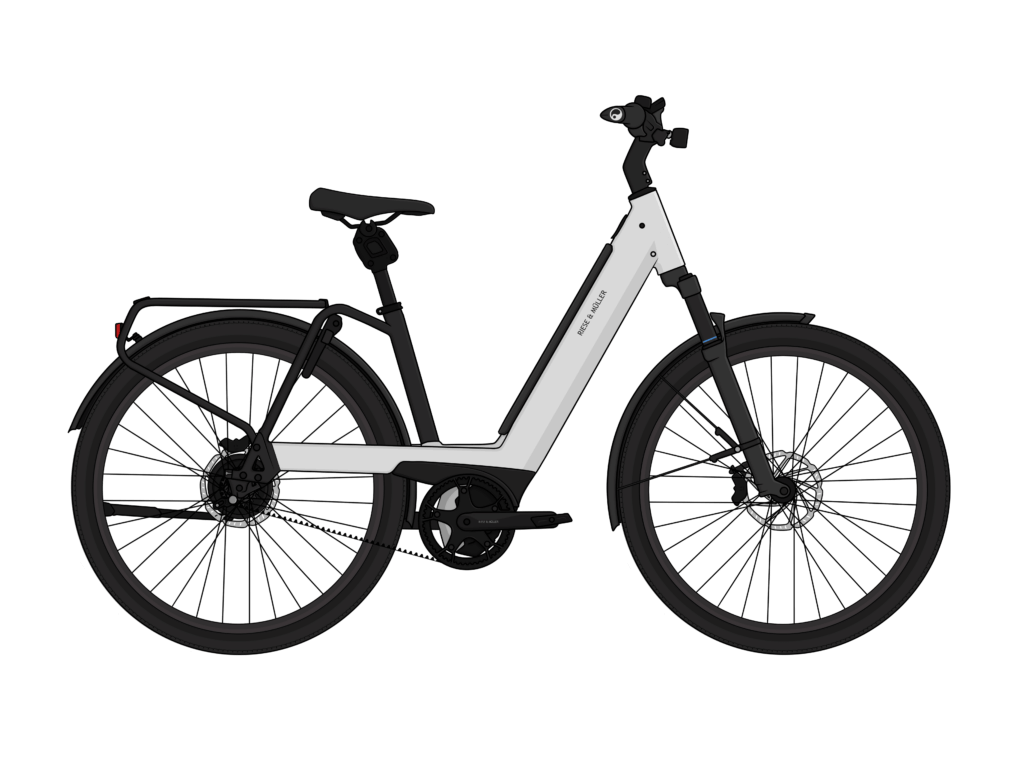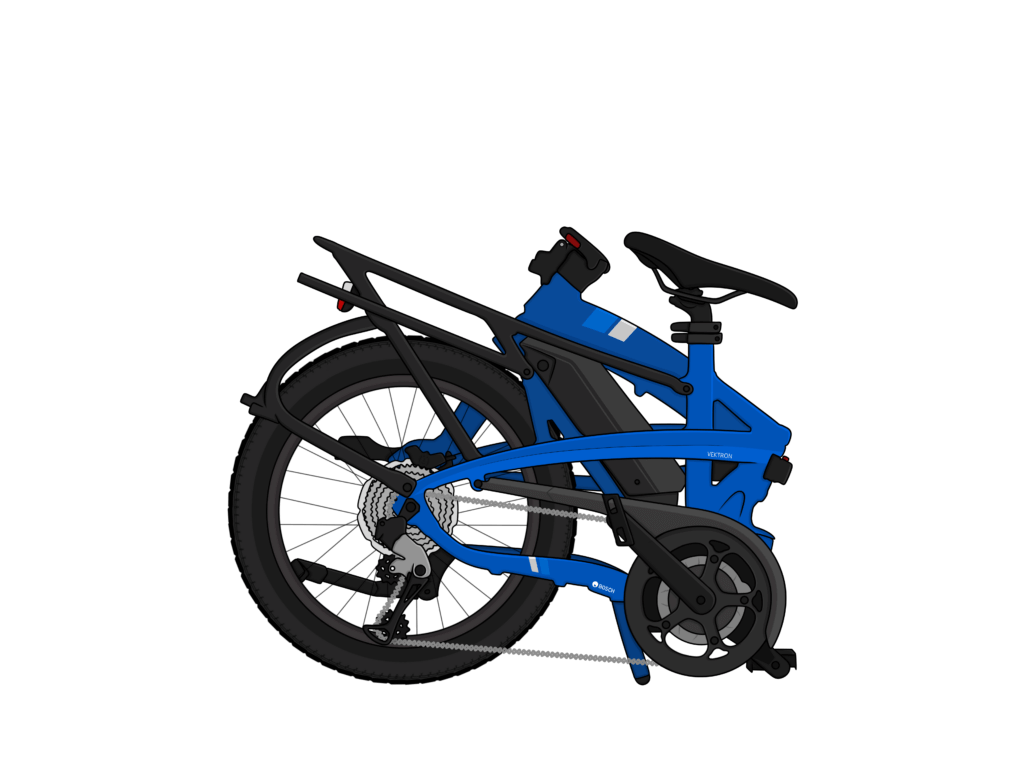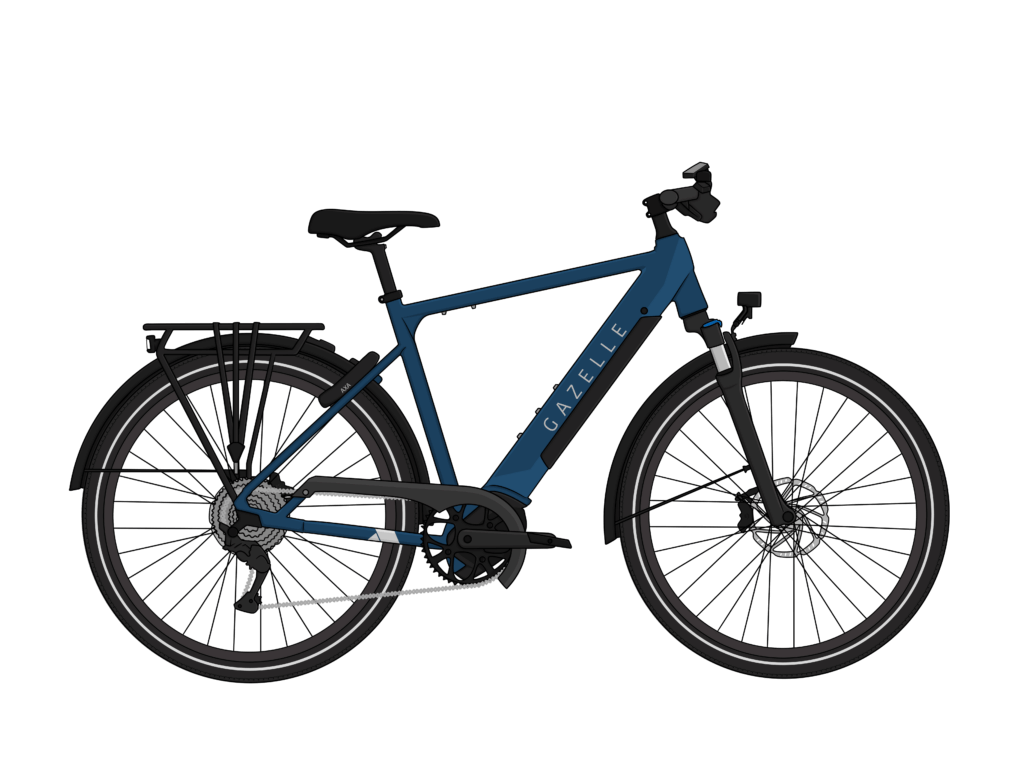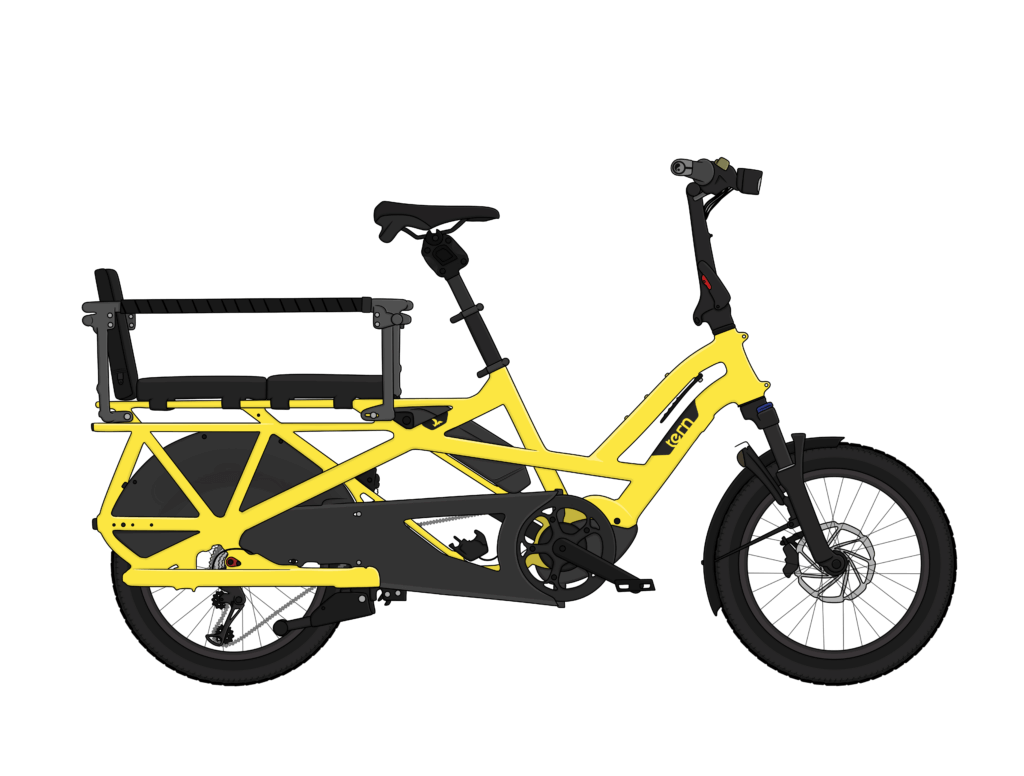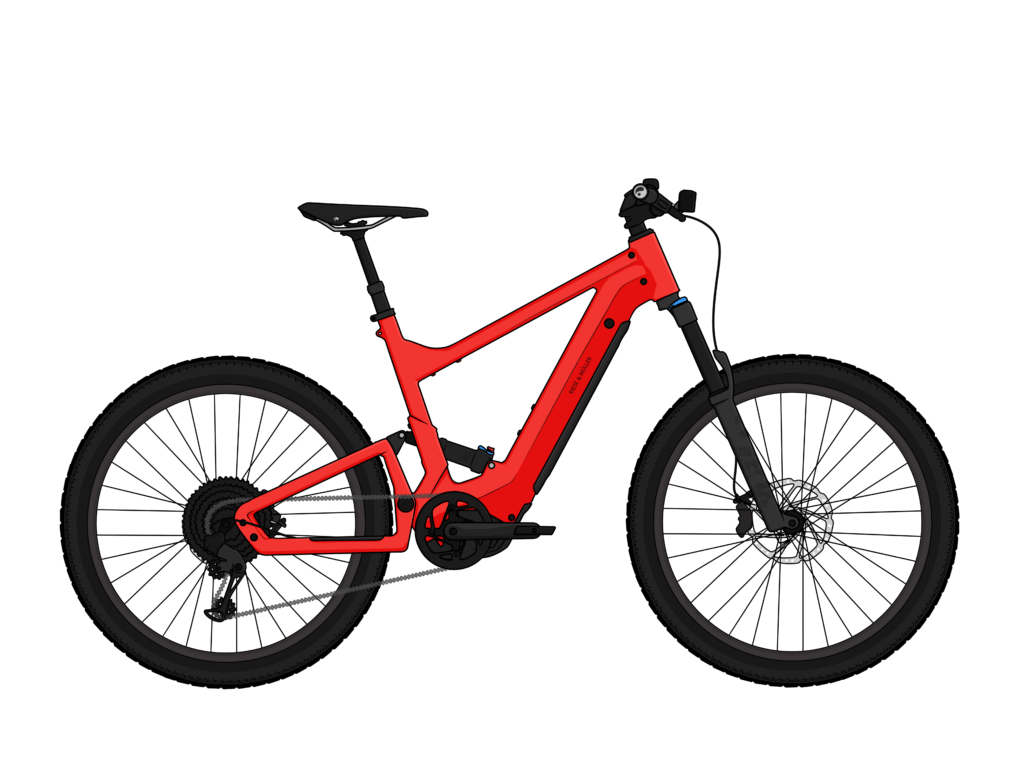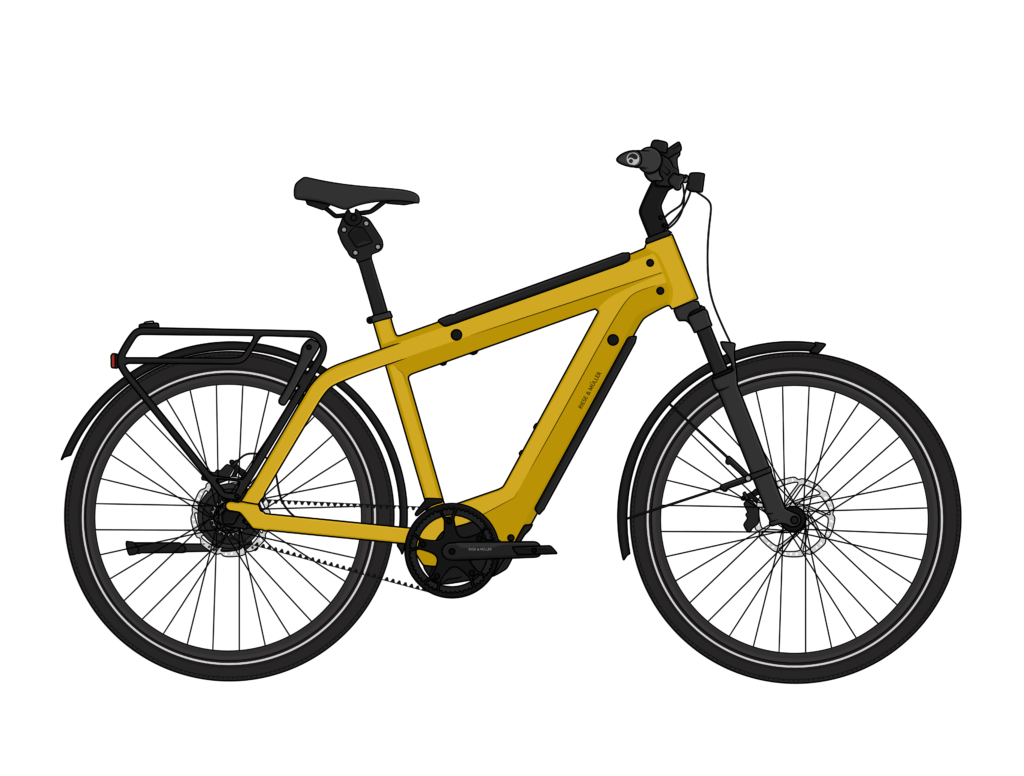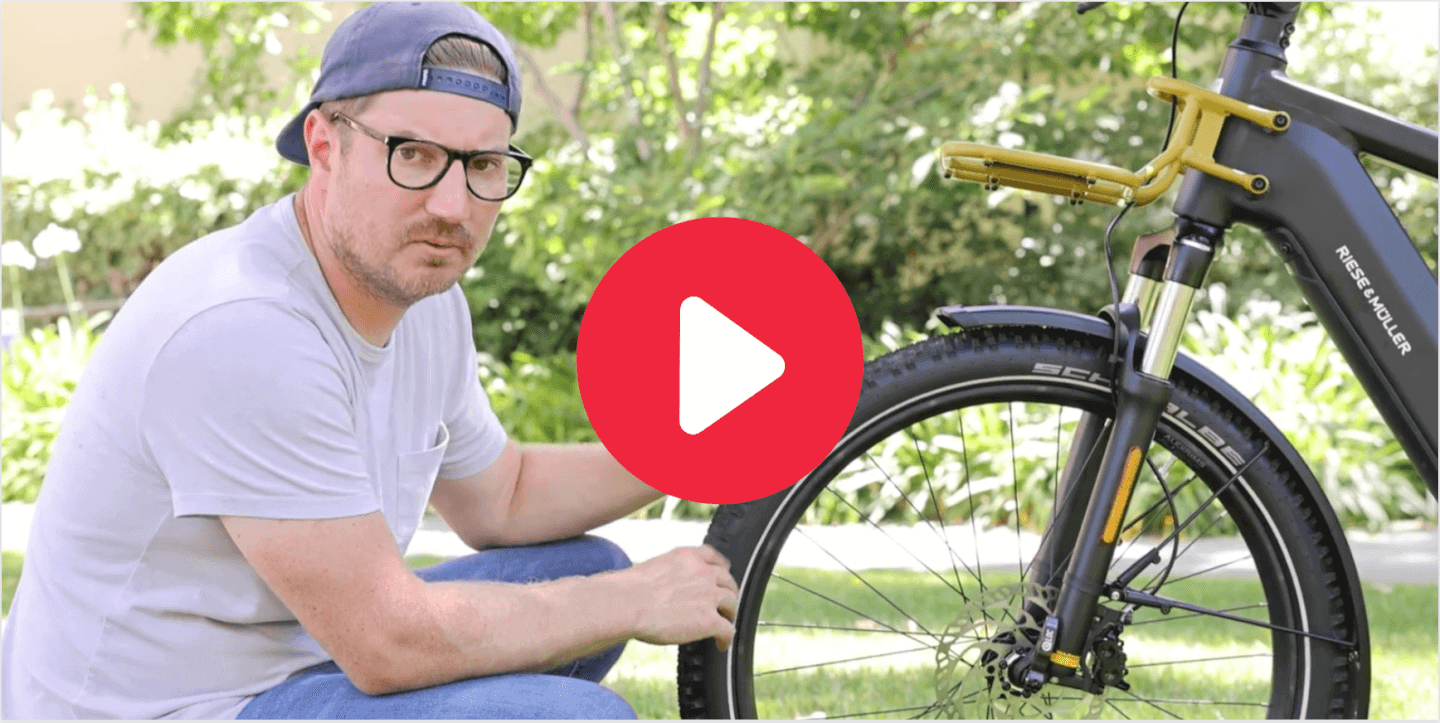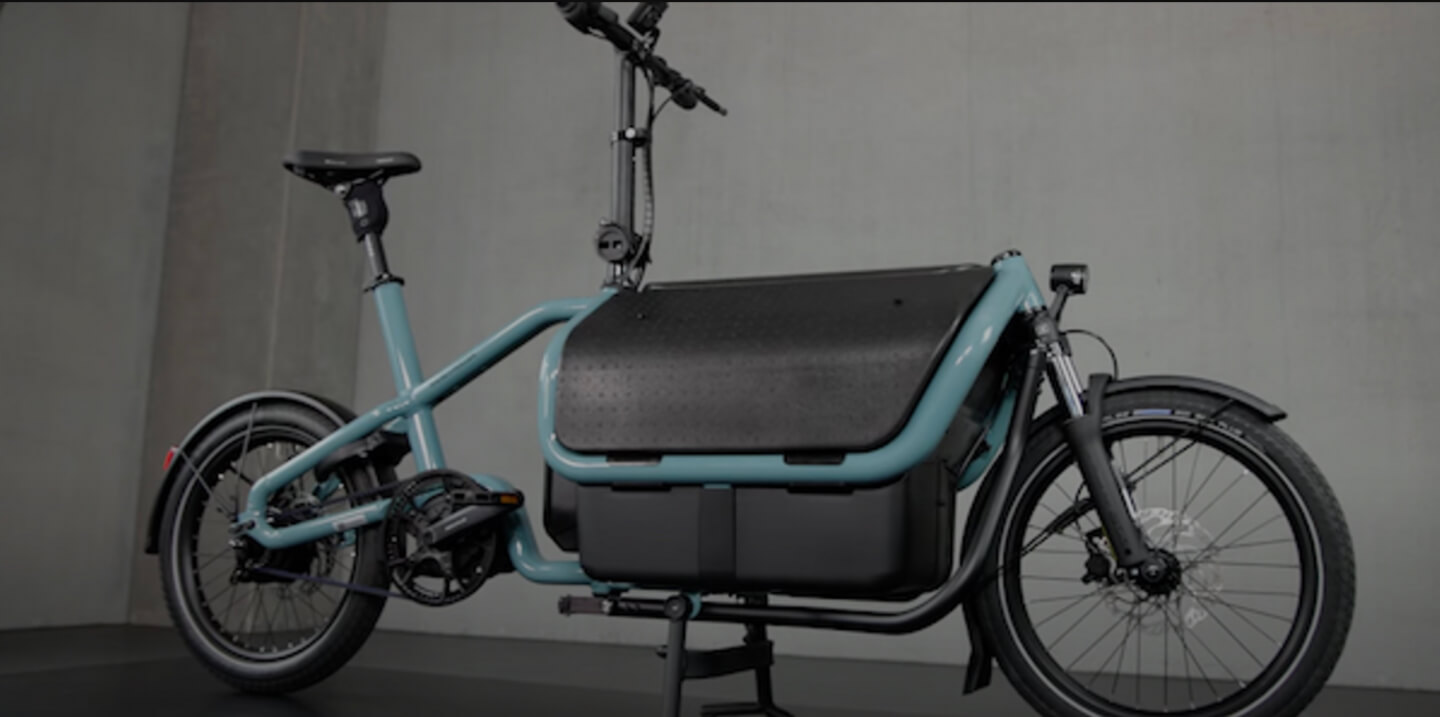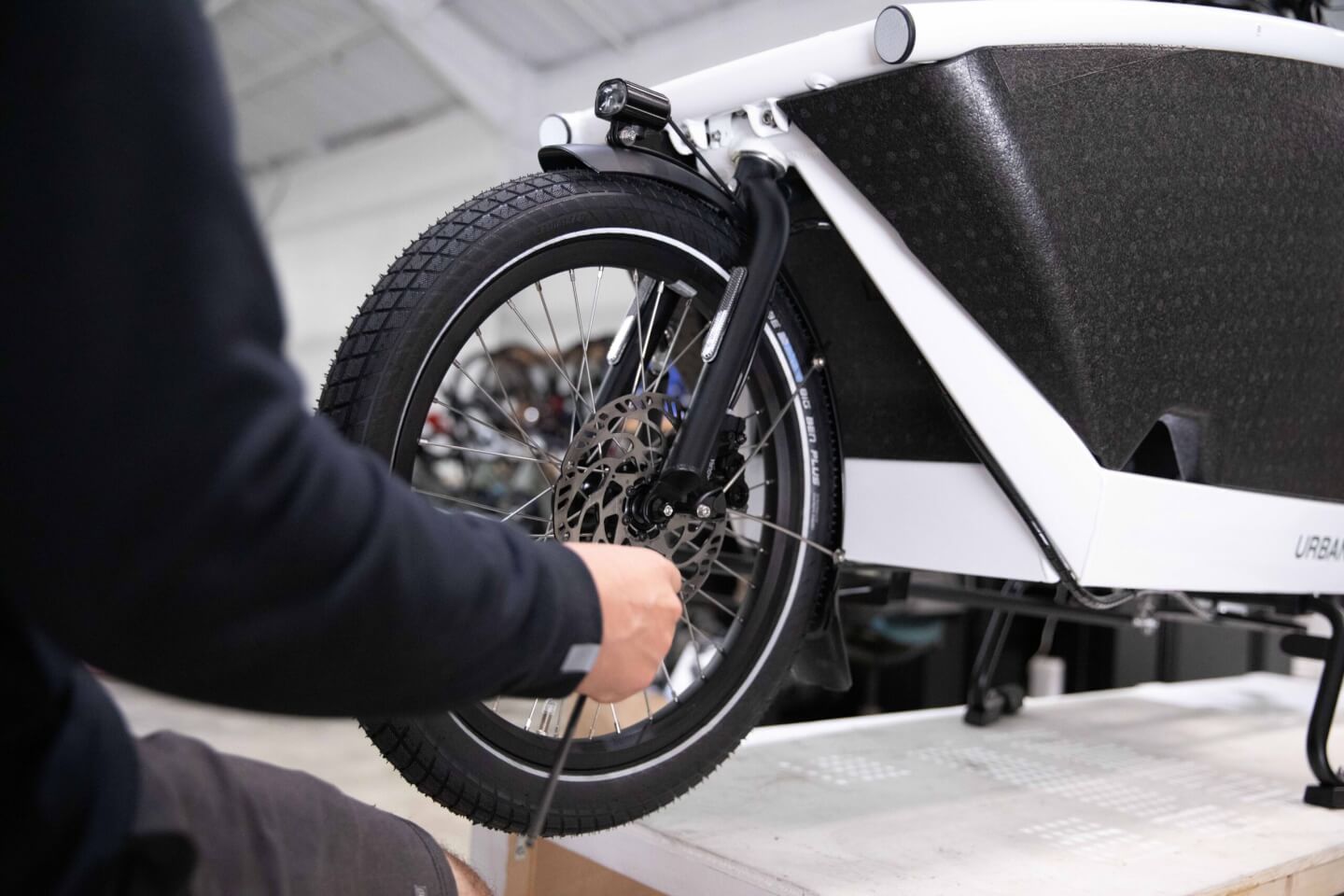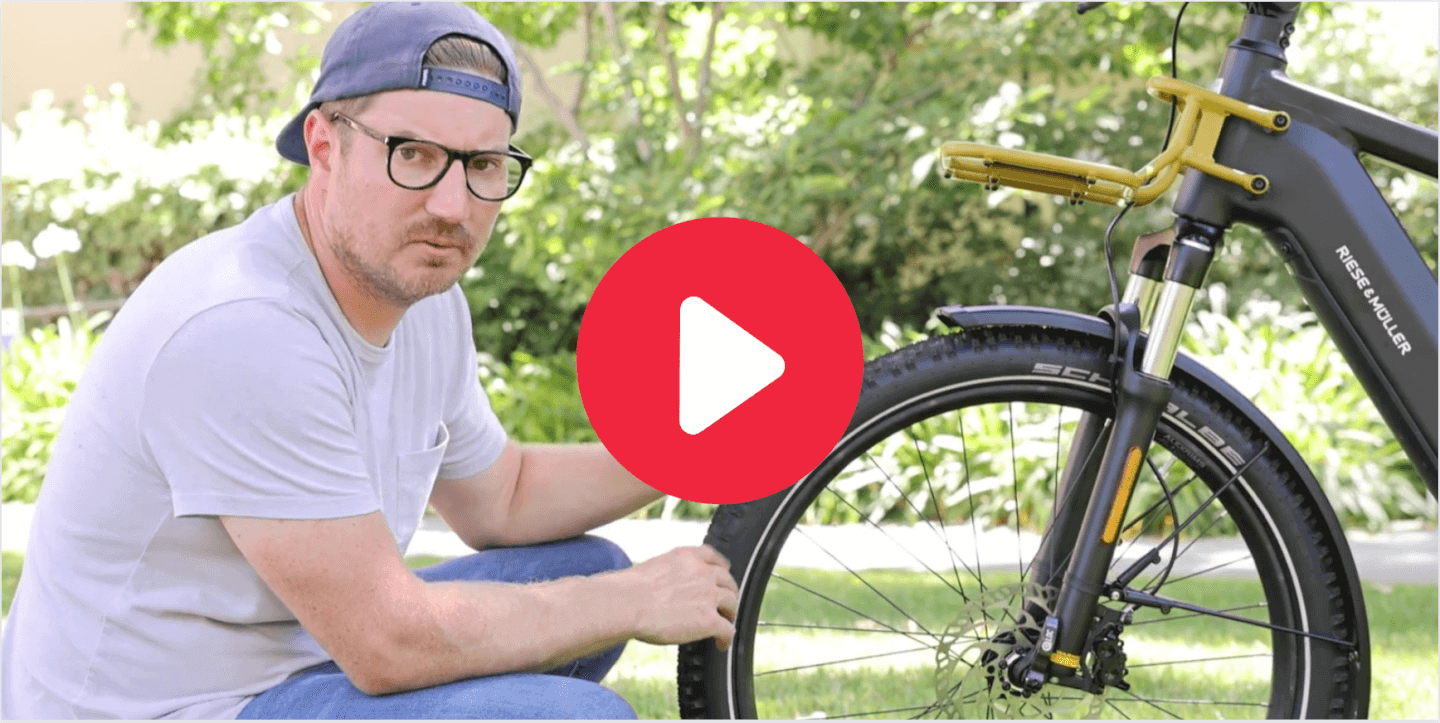AKA Taking Your Bike on the Road–When You’re not Riding it
When you have an awesome electric bike, you may find that you want to take it with you when you head out of town. You may even decide to leave town expressly for the purpose of riding more and exploring different scenery!
When you need a tune-up, a rack is also a good way to get the bike to your local shop.
In which case, how should you go about bringing your eBike along for the ride? As you know, eBikes are heavy (50 lbs or more), and you can’t just throw them in the back of a hatchback.
Well, some people actually can. This Tern GSD arrived for its service appointment at Propel inside a Honda FIT. As its owner said, it’s a well-named car!
For the rest of us, a bike rack is a better option, especially if you have or can install a trailer hitch.
Here are the criteria we use at Propel when determining if a bike rack will be up to the task:
1. Can it support a bike that weighs 60lbs or more?
Electric bikes are heavy, there’s no way around it. Most of the bikes that Propel sells weigh around 60lbs. You can lighten them for transport by removing the batteries, but it’s still safer and more secure to be within the rack manufacturer’s recommended weight limits.
2. Is it relatively low to the ground?
As we’ve mentioned a couple times already, eBikes are heavy. Lifting one onto a rack can be a challenge. The lower your rack, the less likely you are to pull a muscle trying to lift it. Some racks even come with ramps!
3. Does it support bikes from underneath? (And work for step-through frames?)
Bike racks that support the wheels from underneath–where they rest in or on what are often called “trays”–are also a better choice for the safety and integrity of your bike. This position maintains the distribution of its weight in the way it is intended to roll (pun intended).
Also, when the bike is stabilized from underneath, secured at a distance from the vehicle and from other bikes, movement is minimized, which in turn minimizes the risk of scratches and damage to the bikes and/or your vehicle.
Trays are perfect for bikes like the Gazelle Ultimate C380 or the Riese & Müller Nevo, which have step-through frames. These very popular bikes do not have a crossbar, meaning that some styles of rack either don’t work, or require additional parts.
A final benefit of trays is that they hold the bike in place while you are securing it: no need to balance a bike with one hand and fasten it with the other.
4. Does the attachment system accommodate fenders and racks?
Most of the bikes that Propel sells have fenders and rear racks. We look for bike racks that are designed to accommodate these extra features securely.
5. Can bikes be locked onto the rack?
If you ever want to stop during the course of your travels (for something other than a bike ride), you should be able to secure the bikes so that they cannot be stolen easily off the rack. The racks that Propel recommends include locking systems. If you are looking at other options, keep this in mind as you compare features.
Hitch-Mounted Racks
At Propel, we find that hitch-mounted bike racks–rather than a roof-rack, or a rack suspended from the frame of the vehicle–are best at meeting these criteria.
Because the hitch ties into the structure of the vehicle, a hitch-mounted rack can support more weight than other types of racks–as well as absorb more of the forces caused by uneven road surfaces.
Finally, hitch racks are lower to the ground than other styles, meaning that you don’t need a great deal of upper body strength to get your 60lb bike onto the rack. In fact, many hitch-mounted racks also include design elements such as a ramp to help roll the bikes up and into position.
Some Recommended Rack Options
These racks are not cheap. The quality of materials and craftsmanship usually correlates with price. We do have one customer-recommended option that is cheaper because it requires a considerable amount of assembly.
Thule
The Thule Easyfold XT uses trays to hold two bikes, each weighing up to 65lbs. The attachment points on the trays adjust to accommodate bikes with different wheelbases as well as different tire thicknesses. The main attachment point is to the bicycle’s frame, meaning that fenders and racks are unaffected.
The Thule Easyfold XT is well designed in other regards as well. It comes with a ramp for rolling the bike up into position. (Helpful note: make sure the ramp is really clicked into the rack.) Then, you can use the Bosch system’s handy “walk assist” function to have your bike help roll itself up!
The rack also folds up well and compactly for storage when not in use. When folded, it can be rolled using the caster wheels—which is welcome, as the rack itself weighs 40lbs.
There are a few additional Thule accessories you might want to consider, like a license plate holder to attach to the outermost bike, or an extra-long ramp if you have a taller car such as an SUV.
Thule has another model coming out in 2022 that will also work for eBikes, the Thule T2 Pro XTR. It is similar to the Easyfold XT, at a slightly lower price. Each tray can support up to 60lbs, rather than the 65lbs that the Easyfold XT can support.
If you have a lighter eBike such as a Gazelle or a Flyer, the T2 Pro XTR should work well for you!
Küat Racks
Küat is a company that specializes in high quality, well-designed vehicle racks. They have a range of highly regarded hitch-mounted bicycle racks that meet all of our criteria.
The NV Base 2.0 is their most basic. It does everything you need for transporting two eBikes. However, for those of you who might want a little extra—say, to help you do some repairs while you’re out and about—the NV 2.0 does everything plus includes a small built-in bike stand called “The Trail Doc,” which could come in super handy.
The Piston Pro-X is Küat’s newest contender, and it is serious. It has integrated lights that connect with the car lights, and pneumatic arms to help load the bikes into position. It is also RV-compatible, which is a welcome addition to the options for RV adventures!
A Few Additional Tips and Accessories
If you’re going to transport your bike on a rack, we recommend taking the battery or batteries off to lighten the load and reduce the bouncing-around forces (occasionally we are descriptive rather than technical).
And, once you’ve removed the batteries, you may want to consider covering the exposed battery contacts to protect them from “schmutz” (that’s a good New York-y word for dust and grime). If your drive is long, or includes any gravel roads, this is a good idea.
Special transport covers are available for Riese & Müller bikes with internal batteries. This is a Riese & Müller accessory available through Propel or any other Riese & Müller dealer.
For other bikes with internal batteries, and all bikes with external batteries, Bosch makes little rubbery contact pin covers for about $3 each. These are easy to order—hit us up any time and we can send them to you.
Covers
If you are transporting your bike on a rack, you may also want to consider covering it. Not only can a cover protect your bike from dust, dirt, weather, dead bugs, and that dreaded road schmutz, but it can add an element of security if you want to park for a while and leave the bikes. Even if your bikes are locked, a cover can add a further deterrent to potential theft.
Covers will add drag, though, and you should definitely do a short trial run to make sure yours stays in place before you hit the highway!
That’s it for now. Do you have a different bike rack or solution that you would like to recommend? Share your thoughts and recommendations with the Propel community below!
Need help choosing the right rack? Reach out to our team for help.

